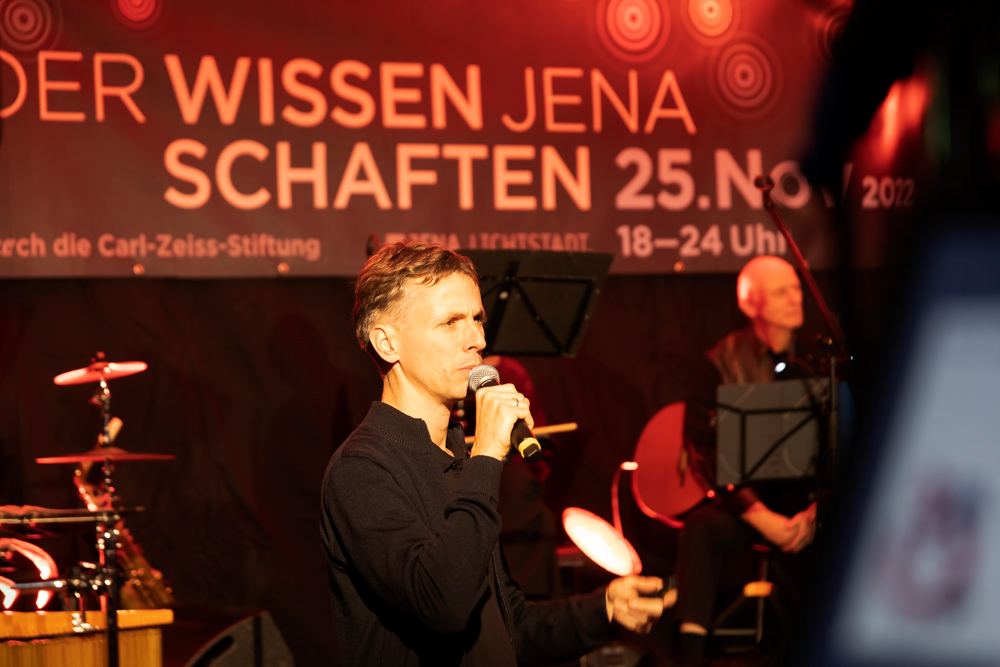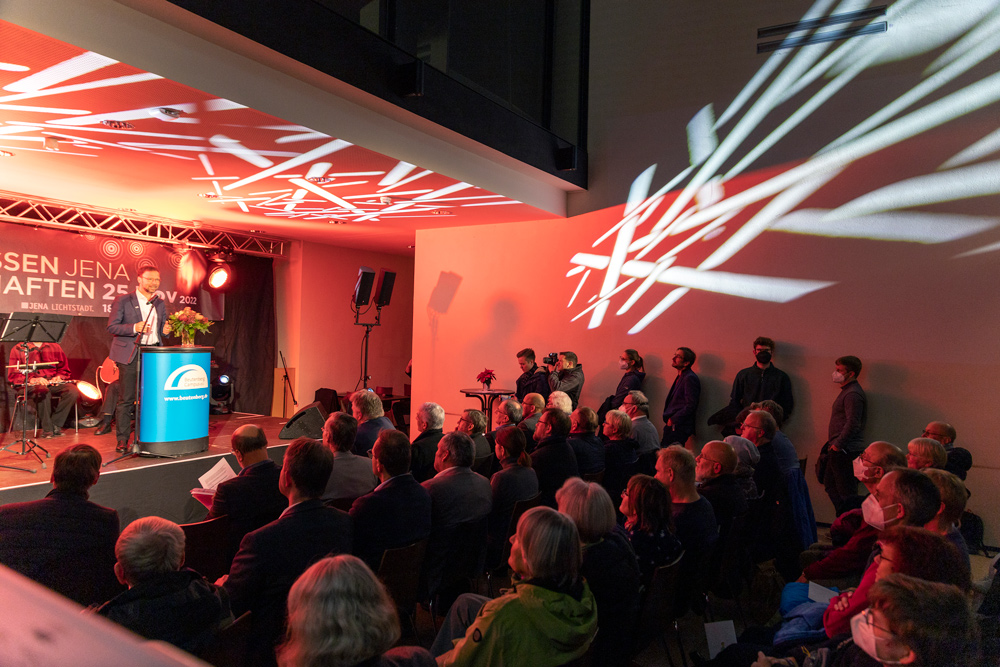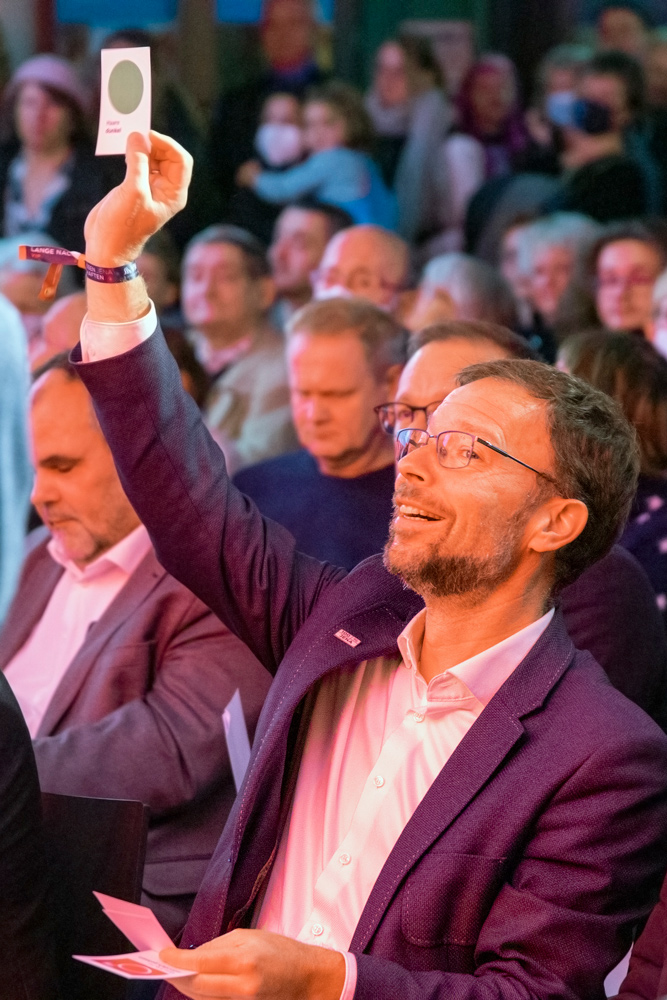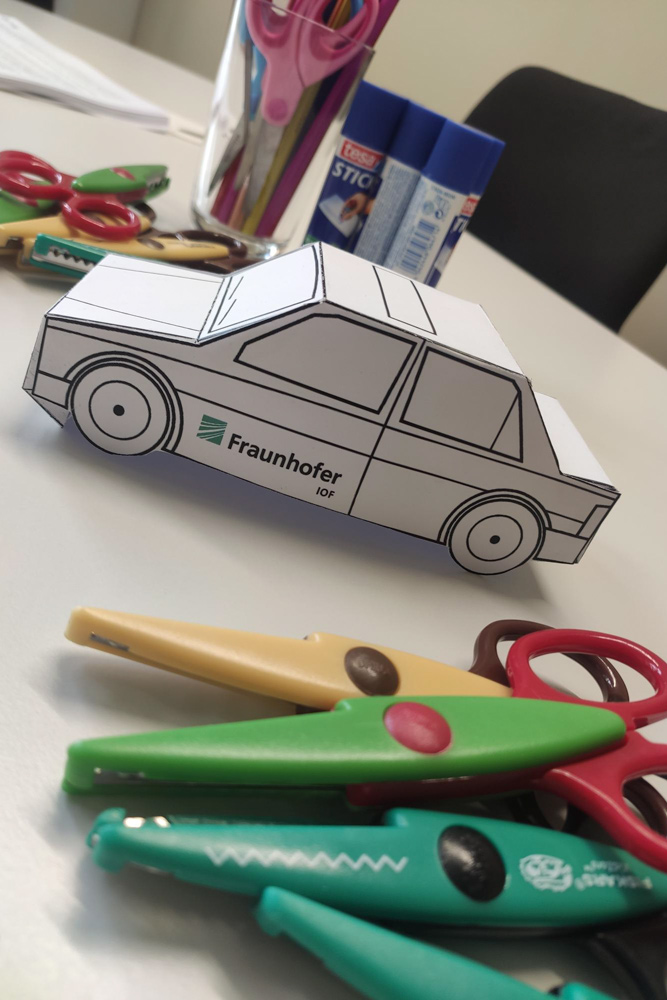Jena (Germany) | November 28, 2022
Nocturnal forays through science
"Long Night of Sciences Jena 2022" fascinated 10,000 big and small science fans
Wandering through otherwise closed laboratories at night and discovering science that sometimes seems almost magical: This was possible again on November 25 at the "Long Night of Sciences" in Jena. The Center of Excellence in Photonics also opened its doors and welcomed numerous science fans.

The night has a special magic. This is especially true for nights when the veil of everyday life is lifted - as happened last Friday. While everything outside was shrouded in darkness, the curtain, that covers many scientific secretes, was once again pulled back in many Jena laboratories and research institutions on the occasion of the "Long Night of Sciences" (LNdW): More than 400 offerings scattered throughout the city of light attracted science fans young and old to discover what sophisticated ideas and technologies lie behind things that sometimes seem quite ordinary to us and sometimes downright magical.
A total of 10,000 guests wandered through the long November night, which invited visitors to an exclusive look behind the scenes of science and research. The Center of Excellence in Photonics, consisting of the Fraunhofer Institute for Applied Optics and Precision Engineering IOF and the Institute for Applied Physics at Friedrich Schiller University, was also pleased with the lively demand, with over 2,000 visits.
Quanta and their Twins: Opening on the Beutenberg Campus

The Science Night was opened at the Abbe Center on the Beutenberg Campus. The Beutenberg is home to nine research institutes and two technology centers, which in turn serve 50 companies. A fitting place, then, to start the night's enthusiasm for science and research together. And indeed, the visitors did not have to wait long to dive deep into highly scientific material: Dr. Falk Eilenberger, researcher at the Fraunhofer IOF as well as at the IAP, took this year's awarding of the Nobel Prize for Physics to three quantum researchers as an opportunity to introduce the guests to the fascinating world of quanta.
For this purpose, he performed a so-called "Bell test" on stage. In this test, pairs of entangled particles (e. g. photons) are generated and sent to different locations. The "particles" Eilenberger used for demonstration purposes were, in this case, the audience present. Each guest was given a personal quantum twin - namely a character from the popular cartoon series "The Simpsons". Many smiles compensated for the fact that even despite Eilenberger's lively and entertaining presentation, some quantum secrets remain secret for the time being. Nevertheless, this experimental insight into the fascinating and at times almost magical world of quanta revealed their gigantic application potential for a safer, healthier and more comfortable life for mankind in the future.
How researchers from Jena in particular are working to improve our lives with the help of quanta, but also with all kinds of other know-how from the fields of optics and photonics, could be experienced by visitors directly next door in our institutes: There, employees presented a wide range of technologies from the fields of space research, health, light and mobility, as well as sensor technology and robotics in various experience worlds.
Great science for little optics fans
But it was not only in its main building that the Fraunhofer IOF welcomed bright guests: the institute began in 1992 - exactly 30 years ago - in the so-called "Owl House" in Jena's city center. For capacity reasons, it moved to a new building on the Beutenberg Campus in 2002. For two years now, the building has once again been populated by employees of the institute. In the next few years, more colleagues are to follow and move from the Beutenberg, where a new research building is being constructed in parallel for the Fraunhofer IOF, which continues to grow, to the branch office at Schillerstraße 1.
Accordingly, the institute invited visitors to discover science from three decades of optics and photonics research "made by Fraunhofer" in the Owl House as well. The exhibition there focused on the three German Future Prizes awarded to researchers from Jena in 2003, 2007 and 2021. The games and craft activities for young scientists, which helped to explain the complex technology behind the award-winning innovations in a way that was suitable for children, were particularly popular (more information on the award-winning developments).
At the IAP, the laser marker was once again a permanent favorite in the truest sense of the word. But stations that invited visitors to get active themselves were also in high demand. For example, the smart table tennis racket, developed by IAP alumni Simon Stützer and Toni Eichelkraut, could be tested. There was also a great deal of interest in the light workshop and all kinds of amazement at the possibilities of microstructure technology, which can make spaceships fly with great public appeal. Interested visitors also got to talk to the developers of the peak power laser and the former IAP scientist Dr. Tino Eidam, who was not only able to explain the technology behind it at the AFS GmbH booth, but also had fun "adjusting the sand laser".
This diverse offering was rounded off by informative and practical presentations from both institutes.


